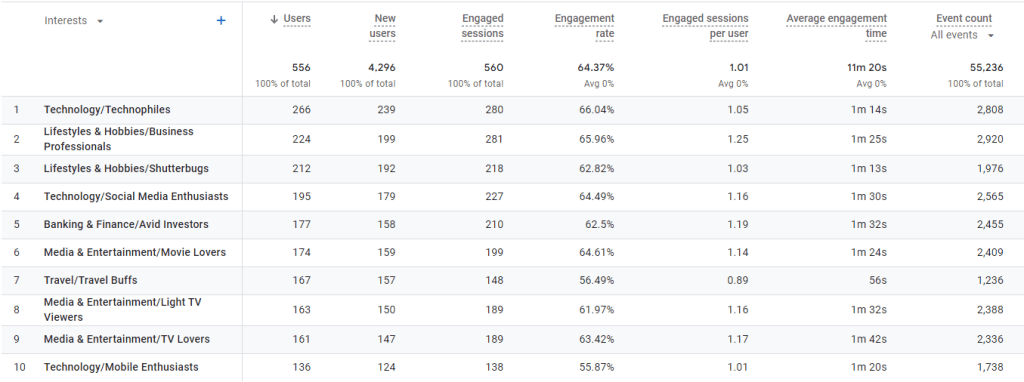Content marketing lies at the foundation of any marketing strategy. For the sale of focus, we’ll only discuss digital content marketing in this article.
Whatever you do to market your business online – link building, conversion optimization, organic search findability, etc. – always starts with content.
What is Content Marketing?
Content marketing is the process of creating and promoting content, in our case, digital content.
Content can come in many types or forms. This can be an advertising copy you will use in PPC, a video you will put on your Youtube channel or an article you’ll publish on your blog.
Content marketing may have different goals, including:
- Attracting target audience to the site
- Building brand loyalty
- Positioning your brand as the niche knowledge hub
- Increasing conversions
When you come to think of it, content marketing serves each and every purpose your current marketing strategy may include. This is why content marketing is so fundamental.
The Goals of Content Marketing
Digital content marketing serves myriad objectives, crucial for any business’s online presence:
- Drawing your target audience to your website.
- Cultivating brand loyalty and establishing your brand as a knowledge authority in your niche.
- Enhancing conversions and overall customer engagement.
Effective content marketing becomes indispensable in an era where informed decision-making is paramount. Studies indicate that up to 70% of consumers prefer learning about products through content over traditional advertisements. Thus, a well-crafted content marketing strategy is vital for contextualizing your products or services in a manner that resonates with your audience.

To achieve success in your content marketing strategy and effectively build a context around your brand, it’s crucial to shift the focus away from your own products and services. The essence of content marketing lies not in promoting your business, but in addressing the needs and interests of your audience. By realigning your marketing approach to prioritize your audience’s perspectives and requirements over your own brand narrative, your content marketing efforts are more likely to yield tangible, positive outcomes.
Journey Through the Buyer’s Funnel
The buyer’s journey is a path of discovery and decision-making, and your content plays a pivotal role at each juncture:
- Awareness: A blog post optimized with relevant keywords introduces your brand or product to potential customers.
- Interest: Engaging content draws users deeper into your site.
- Engagement: Effective copy and calls-to-action (CTAs) encourage users to subscribe or follow.
- Action: Compelling product descriptions drive purchases.
- Advocacy: Post-purchase emails and marketing automation inspire customers to share their positive experiences, amplifying your brand’s reach.

From top to bottom of the sales funnel, there should be a content asset helping the customer follow the correct path. Here are some examples the types of content a buyer might see at each stage of the funnel:
- Awareness: A keyword-focused blog post bringing a user to your site from a search result page
- Interest: An interesting piece driving the user deeper into your site to read more
- Engagement: A solid copy and CTA convincing a user to join your opt-in list
- Action: A solid product description enticing the user to buy
- Advocacy: A marketing-automation-driven email prompting your customer to spread your word around and share their happiness with their friends on social media
Content Marketing is all about focusing on your audience
The key to successful content marketing lies in understanding and connecting with your target audience. Begin by crafting detailed buyer personas and use Google Analytics to refine these personas continually.

By leveraging the insights gained from understanding your audience’s demographics, you can tailor your content to precisely resonate with their preferences and needs. This targeted approach ensures that your content not only captures attention but also sustains engagement, fostering a stronger relationship between your audience and your brand.
Further Reading: Why and How to Create Customer-Centric Content Marketing Strategy
How to Brainstorm Useful Content Ideas
Once you’ve gathered insights into the audience you are targeting, it is time to build your never-ending list of content ideas.
The best way to make sure that the right people will find your content is by making yourself as available and easy to find for them as you possibly can. One of the best ways you can do this is through search engines, such as the almighty Google in particular.
Keyword research will be your help here as it is useful for many purposes:
- Understanding your target audience and what drives them.
- Identifying topic popularity.
- Exploring your competitors’ focus points.
- Building content that is optimised for organic search.
Everything you put out in the online world should be able to lead your target audience straight back to your site directly. You can use tools like Ubersuggest, Ahrefs and SEMrush to perform keyword research and start building a content plan.
Further Reading: Content Marketer’s Guide to Keyword Research
Content Marketing and SEO: How to Optimize Your Content for Search Engines
SEO is an integral part of content marketing. It’s not about keyword density but about strategically placing keywords to enhance visibility and engagement. Here are some basic steps you can take to optimise your content for search engines:
- Include your target keyword in your article title.
- Include your target keyword in the URL
- Include your target keyword at the beginning of the article.
- Include your target keyword in 1-2 of the article’s sub-headings
- Include your target keyword in the ALT text of your images.

Be Consistent When Publishing Content
Overseeing a content marketing strategy can be daunting, given the myriad elements to consider and interconnect. However, the linchpin of successful content marketing lies in its consistency. This encompasses maintaining uniformity in the quality, style, and timing of your content updates. It is this steadfast consistency that will drive recognizable results, enhancing brand recognition and association.
Achieving a consistent content strategy involves practical steps, including:
- Implementing an editorial calendar, which can be efficiently managed using tools like Google Calendar.
- Developing a comprehensive branding kit, inclusive of your brand’s specific colours, fonts, and logos, to ensure visual consistency across all platforms.
- Establish a standard writing checklist for your content team, ensuring uniformity in the quality of all published material.

How to Market Your Content on Social Media
The importance of social media in today’s digital landscape is indisputable, serving not just as a marketing tool but also as a platform for audience engagement and feedback.
Social media channels, including Facebook, Twitter, and LinkedIn, offer direct communication with your target audience, making them invaluable for both marketing and research. The key is to create content that is engaging and visually appealing, thus attracting followers and fostering a loyal customer base.
Always follow a 80/20 rule:
- 80% of your social media updates should be non-promotional, non-linked posts that provide value or fun. These will engage your audience and get them to want to come back
- 20% of your social media updates should link to your site (and content) with a unique and engaging copy to accompany each link.
When promoting your content on social media:
- Try and phrase it as a question to encourage discussion
- Ask for your followers’ opinion or help
- Create a custom image to go with your link (like a visual quote, for example)
- Tag people or other brands you featured in your content.
How to Include Niche Influencers in Your Content Marketing Strategy
Incorporating niche influencers into your content marketing strategy is a modern tactic that leverages micro-communities around social media personalities or personal brands. This approach can significantly broaden your online presence by:
- Creating more credible content.
- Transforming influencers into brand advocates or fostering enduring relationships.
- Increasing content shares and backlinks through influencer promotion.
To effectively integrate influencers, consider:
- Inviting them to lead your webinars, podcasts, or Twitter chats.
- Compiling a collaborative content piece with several influencers sharing insights on a trend.
- Identifying influencers within your customer base for authentic brand experiences.
Approach influencer engagement with sensitivity to avoid potential reputational risks. Build genuine relationships rather than focusing on one-off projects. Tools like Buzzsumo are helpful for identifying potential influencers by analyzing engagement metrics and content relevance.

Buzzsumo offers a variety of engagement metrics allowing you to identify Twitter users who are likely to talk back to you and engage with your content.
How to Utilize User-Generated Content
Many companies utilize user-generated content (UGC) on their social media channels as a means of engaging with their customer base. UGC not only encourages people to write about them positively online in return for the spotlight, it also creates a relationship between the customer and the business which can often be more valuable than any other content marketing result.
Consumers are becoming more willing to give their money to businesses they engage with and feel they can trust. And people trust people. So utilizing user-generated content is almost always a good idea.
Besides, re-engaging your current customers makes more sense, budget-wise. It is a lot cheaper and easier than constantly trying to reach out to new customers and convince them to keep using your site instead of leaving off right away.
When it comes to on-site user-generated content marketing, a few ideas include:
- Invite your customers to share their stories using your products,
- Tell your customers’ stories (if they are willing to share them)
- Publicize social media polls and share results on your site
Remember: Your followers are there for your content, so keep bringing in what they need. Even if your follower count crawls up and up, don’t get big-headed about it. Always focus on creating good content.
How to Diversify Your Content Marketing
As I mentioned above, content can come in many forms, and it’s the beauty of it. All of your target customers may have different preferences as to what type of content they respond better to. Some may prefer text articles, others would only engage with a video.
There are also different types of infographics (flowcharts, visual summaries, timelines, etc.) and many other possible ways to convey your idea into a shareable asset.
So how to please everyone? You can diversify your content marketing and expand your channels with a repackaging tactic.
Content repackaging is turning one content format into a different one without investing lots of time in new research. More often than not, this is about repackaging text content into something else.
Here are a few examples:
Turn your text article into a video
This is one of the most powerful content repackaging tactics. There are lots of ways to expand your content marketing to video-only (Youtube, Vimeo) or video-friendly (Instagram, Facebook) marketing channels.
Tools like Wave.video and InVideo.io allow you to turn your text articles into videos in seconds. All you need to do is pick a template, select background image and music, and you are done!

Turn your text article into an infographic
Infographics are a great way to make your content more shareable and memorable, as people tend to engage with visual content more. Repackaging text content into infographics is especially powerful when you make your content easier to follow and take home.
Use Visme or Venggage to create professional infographics based on your text content:
- Turn step-by-step instructions into flowchats
- Turn stories into timelines
- Create visual takeaways making it possible for your readers to download and use them as reference

Turn your text article into a slideshow
Finally, turning your content into a slideshow will make it possible for you to generate some additional brand exposure through Slideshare and LinkedIn. With tools like Venngage and HaikuDeck you can easily re-use your article images (screenshots, visual quotes) and put together beautiful slideshows.

Slideshows engage users well (as they have to click through to see the next slide) and they can be embedded to your page making your content richer.
Final Thoughts
Creating a successful content marketing strategy requires continuous strategy development and understanding of your unique brand strengths. Recognize there’s no one-size-fits-all approach. Dive deep into what makes your brand appealing and understand your customer’s journey from discovery to purchase.
Engagement at every step is crucial; losing focus can mean losing customers. Learn from successful brands, observe their social media strategies, and adapt these insights to your brand’s context. Remember, content marketing is an evolving art that demands constant experimentation and adaptation to find what works best for your brand.



















